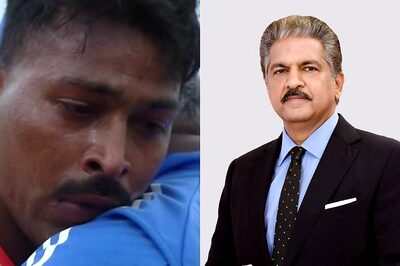
views
What’s in a phase? Probably there is something, if elections in a large province with diverse demography are held in multiple phases over a period of time.
The sequence of electioneering from first to the last phase may influence electoral outcome, one way or the other under given circumstances.
A BJP functionary closely associated with 2014 general election management was keeping his fingers crossed till the announcement of poll dates.
He heaved a sigh of relief when the Commission called for a seven phase polls in UP, with western districts polling in the first leg.
The electioneering travelled from West to East culminating in the Poorvanchal region with two high stake battles in Varanasi (Narendra Modi) and Azamgarh (Mulayam Singh Yadav).
“All other factors remaining constant, it is important at times for a party in multi-phased polls to do well in the first couple of phases," said the BJP functionary.
“Western UP, post the riots, was our strong-hold. A good performance here helped us build a momentum with each passing phase to outclass our opponents in areas where we have been traditionally weak,” he said.
By that same argument, the announcement of poll dates for the 2017 UP assembly elections would have brought some cheer to the BJP.
As even this time the elections will begin from Ghaziabad bordering Delhi and end in far-east Chandauli.
Now contrast this with 2012 state assembly polls. Once again UP had multi-cornered fight and multi-phased polls. But the electioneering that year started from the east and moved west in a clockwise direction - the areas where regional parties have traditionally done well.
With SP seemingly doing well, and with momentum on his side, Mulayam Singh Yadav picked up seats in western districts where he has no or little base vote and romped home in the Ruhelkhand regions which polled last.
Miffed with Mulayam Singh for joining hands with Kalyan Singh for a brief while, Muslims in pockets voted for the Congress in the first phase.
Maharajgunj near Gorakhpur, for instance, was won by the party after many years. The trend continued till the very last with Congress picking up almost two dozen seats from the state.
Likewise, the first couple of phases in the upcoming polls could also be crucial in determining the trend of minority votes in parts which poll later.
BSP this time around has put all its money on Dalit-Muslim combination. Take for example Bijnor district abutting Uttarakhand in Western UP.
Out of the eight seats, two are reserved; and for the remaining six BSP has fielded muslim candidates. SP is not far behind nominating five candidates from the minority community.
As the elections travel from west to east, Muslims voting pattern in the first couple of phases in places like Bijnor, Saharanpur and Rohilkhand may set the trend.


















Comments
0 comment